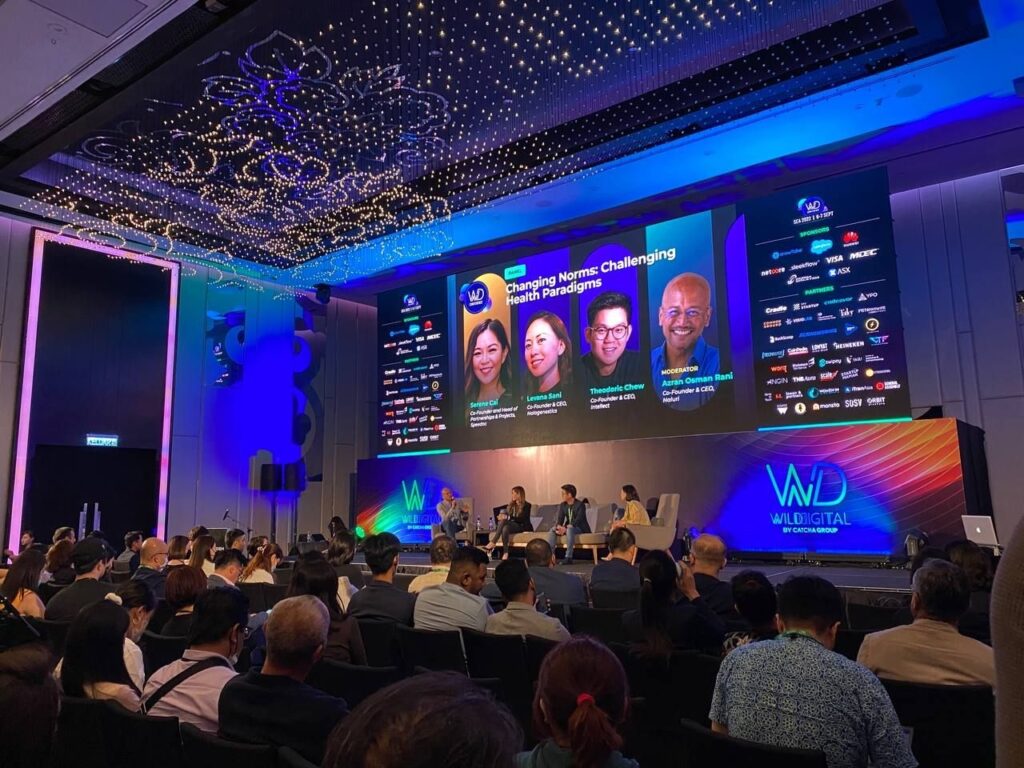
Wild Digital Southeast Asia is here with interesting panellists to discuss on the future of technology in Asia.
The future of technology is disrupting and going “wild” in Asia
- The continuous increase in digital adoption is what fuels the buzz surrounding Web3 and the Metaverse
- As economic conditions change and customer demands rise, payments have evolved significantly over the last decade, which has an influence on banks and fintech firms
Despite market disruptions and unprecedented global occurrences, the progress of technology in Asia will continue because leaders actively discover answers, surmount challenges, and produce new products. Technology will continue to be a crucial element of success on any terms as this rate of innovation continues.
With a limitless horizon of technological innovation, this era offers an exciting iteration on what it means to live, work, and succeed not just as people or companies, but as the human race as a whole. The annual Wild Digital Southeast Asia flagship event, recently kicked off where the region’s biggest players and leaders of the tech landscape share their most exciting ideas and discuss the emerging trends that are catapulting Southeast Asia into the global arena.
According to Patrick Grove, Co-Founder and Group CEO of Catcha Group, and organizer of the event, the tech industry in Southeast Asia has seen and will continue to see incredible growth this year. With over a thousand people attending the event, there is no doubt that the tech industry is looking to bigger expansions in the months to come.
So, what’s in store for 2022 and beyond? While e-commerce, data management and fintech have been dominating the industry, the buzzword is surrounding Web3 and the Metaverse, which is being fueled by the continuous steep uptick in digital adoption. It also isn’t the only thing that SEA will be able to experience. In fact, technology will have a significant impact on a number of industries, including those in the food, health, and financial sectors, among others.

(Source – Wild digital)
How technology is benefiting the food industry in Asia
Many industries have experienced great development because of the rise of digitalization and technological innovation. For instance, it is anticipated that the foodtech industry would experience exponential growth over the next five years. By 2027, it is predicted to be worth about US$342.5 billion.
There are many reasons why there is exponential growth. According to Carrie Chan, Founder and CEO of Avant, the three buzzwords of decentralization, making it more affordable, and speeding up the process is what is causing the foodtech industry to evolve. When considering how meat was once produced, the question of whether it might be done without using animals was never considered.
“We have never challenged that idea because, despite the fact that we have been exploiting animals to create meat for a very long time, we are aware of how ineffective it is. We attempt to increase its effectiveness by applying self-cultivation or other comparable types of alternative protein technologies. By converting natural resources into the end product, which is, animal protein, and then feeding the cells directly with the nutrients, we make efficient use of the available resources, continued Chan.
DeFi and NFTs in Metaverse
NFTs to act as identities, DeFi, and on-chain credit scoring are a few of the elements that the metaverse requires in order to become a reality. These components uniquely combine to create a virtual environment where you can exist online.
As a result, for the metaverse to operate effectively, a trustless financial system will be necessary. DeFi can help in this situation. Decentralized finance will give the metaverse the crypto-decentralized core structure it requires to support its currencies and economy, enabling users to earn, spend, borrow, lend, and invest without the need for a central authority. DeFi and NFTs can actually both essentially paint a bigger picture.
Theis Simonsen, CEO of Decard, says that this needs to be placed into context as to what the goal of using NFTs and DeFi is because it’s actually connecting various sorts of universes with one another, whether they be virtual or physical.
“I think Defi and NFTs have an important role to play because it will be one of the methods which will connect those worlds. [Not only that, essentially] it can create an immersive experience and tangible ability to other ecosystems – and that’s both providing liquidity and transparency,” added Simonsen.

(Source – Wild Digital)
The new wave of payments
In the last decade, payments have advanced considerably. Banks and fintech institutions have undergone a metamorphosis that has and will continue to impact the business as economic conditions change along with the rise in customer expectations.
Tessa Wijaya, Co-Founder & COO of Xendit agrees with this notion, stating that, back in 2015 for example, in order to utilize Gojek in Indonesia, a user would have to pick up the phone because there was no app and a lot of things had to be done manually.
“The method that has happened has been significantly altered by Xander, who made it possible for payments to be processed swiftly and smoothly. You can make a payment by pressing one button. It’s done seamlessly now. And all of a sudden, you can accept payments. That’s the impact we’ve had. We’ve been very impactful on moving the wheels of the economy by bringing people to go online, to be able to make payments, accept payments online without having credit cards,” she added.
The digital age is here. Asia is the region that has most enthusiastically embraced the Fourth Industrial Revolution, allowing entire nations to skip over outdated technology and directly enter the digital era. The presentations that transpired during the occasion undoubtedly indicated that more things are coming for the region.
READ MORE
- Ethical AI: The renewed importance of safeguarding data and customer privacy in Generative AI applications
- How Japan balances AI-driven opportunities with cybersecurity needs
- Deploying SASE: Benchmarking your approach
- Insurance everywhere all at once: the digital transformation of the APAC insurance industry
- Google parent Alphabet eyes HubSpot: A potential acquisition shaping the future of CRM
